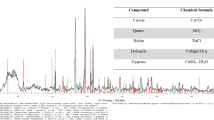Summary
An isolate of Pseudomonas fluorescens, strain 378 was shown to produce a novel surface active compound (code name AP-6). The compound is unique in being a high molecular weight compound but has, in some aspects, properties of a low molecular weight surfactant. The product is extracellular and its formation appeared to be partly growth-associated. Using a semisynthetic medium, fermentor cultivations were performed in the pH range 6.8–8.4. The product yield was optimal at pH 8.0 and gave a final concentration of 210 times critical micelle dilution. At higher pH, specific growth rate, final biomass and product concentration decreased. It consists mainly of carbohydrates and protein, the molecular weight is 1×106 and the isoelectric point is pH 9.1.
The surface tension of an aqueous solution reached 27 mN/m which is a very low value even compared to other surfactants of considerably lower size and the critical micelle concentration was less than 10 mg/l in 0.9% (w/v) NaCl. The kinetics of the adsorption process at the air-water interface was studied using the drop volume technique, and the reaction was found to be rapid, considering the size of the molecule. A concentration as low as 0.025 g/l reached a surface tension of 30 mN/m within 70 s.
Similar content being viewed by others
References
Chaney AL, Marbach EP (1962) Modified reagents for the determination of urea and ammonia. Clin Chem 8:130–132
Dubois M, Gilles KA, Hamilton JK, Rebers PA, Smith T (1956) Colorimetric method for determination of sugars and related substances. Anal Chem 28:350–356
Duvnjak Z, Kosaric N (1985) Production and release of surfactant by Corynebacterium lepus in hydrocarbon and glucose media. Biotechnol Lett 7:793–796
Duvnjak Z, Cooper DG, Kosaric N (1982) Production of surfactant by Arthrobacter paraffineus ATCC 19558. Biotechnol Bioeng 24:165–175
Guerra-Santos L, Käppeli O, Fiechter A (1984) Pseudomonas aeruginosa; biosurfactant production in continuous culture with glucose as carbon source. Appl Environ Microbiol 48:301–305
Guerra-Santos L, Käppeli O, Fiechter A (1986) Dependence of Pseudomonas aeruginosa continuous culture biosurfactant production on nutritional and environmental factors. Appl Microbiol Biotechnol 24:443–448
Itoh S, Honda H, Tomita F, Suzuki T (1971) Rhamnolipids produced by Pseudomonas aeruginosa grown on n-paraffin (mixture of C12, C13 and C14 fractions). J Antibiot (Tokyo) 24:855–859
Jarvis FG, Johnson J (1949) A glycolipid produced by Pseudomonas aeruginosa. J Am Chem Soc 71:4124–4126
Li Z-Y, Lang S, Wagner F, Witte L, Wray V (1984) Formation and identification of interfacial active glycolipids from resting microbial cells. Appl Environ Microbiol 48:610–617
Lowry OH, Rosebrough NL, Farr AL, Randall RJ (1951) Protein measurements with the Folin-phenol reagent J Biol Chem 193:265–275
Molin G, Ternström A (1986) Phenotypically based taxonomy of psychotrophic Pseudomonas isolated from spoiled meat, water and soil. Int J Syst Bacteriol 36:257–274
Persson A, Molin G (1987) Capacity for biosurfactant production of environmental Pseudomonas and Vibrionaceae growing on carbohydrates. Appl Microbiol Biotechnol 26:439–442
Rambeloarisoa E, Rontani JF, Giusti G, Duvnjak Z, Bertrand JC (1984) Degradation of crude oil by a mixed population of bacteria isolated from sea-surface foams. Marine Biology 83:69–81
Tornberg E (1977) A surface tension apparatus according to the drop volume principle. J Colloid Interface Sci 60:50–53
Tornberg E (1978) The application of the drop volume technique to measurements of the adsorption of proteins at interfaces. J Colloid Interface Sci 64:391–402
Zajic JE, Seffens W (1984) Biosurfactants. CRC Crit Rev Biotechnol 1:87–107
Author information
Authors and Affiliations
Rights and permissions
About this article
Cite this article
Persson, A., Österberg, E. & Dostalek, M. Biosurfactant production by Pseudomonas fluorescens 378: growth and product characteristics. Appl Microbiol Biotechnol 29, 1–4 (1988). https://doi.org/10.1007/BF00258342
Received:
Accepted:
Issue Date:
DOI: https://doi.org/10.1007/BF00258342




